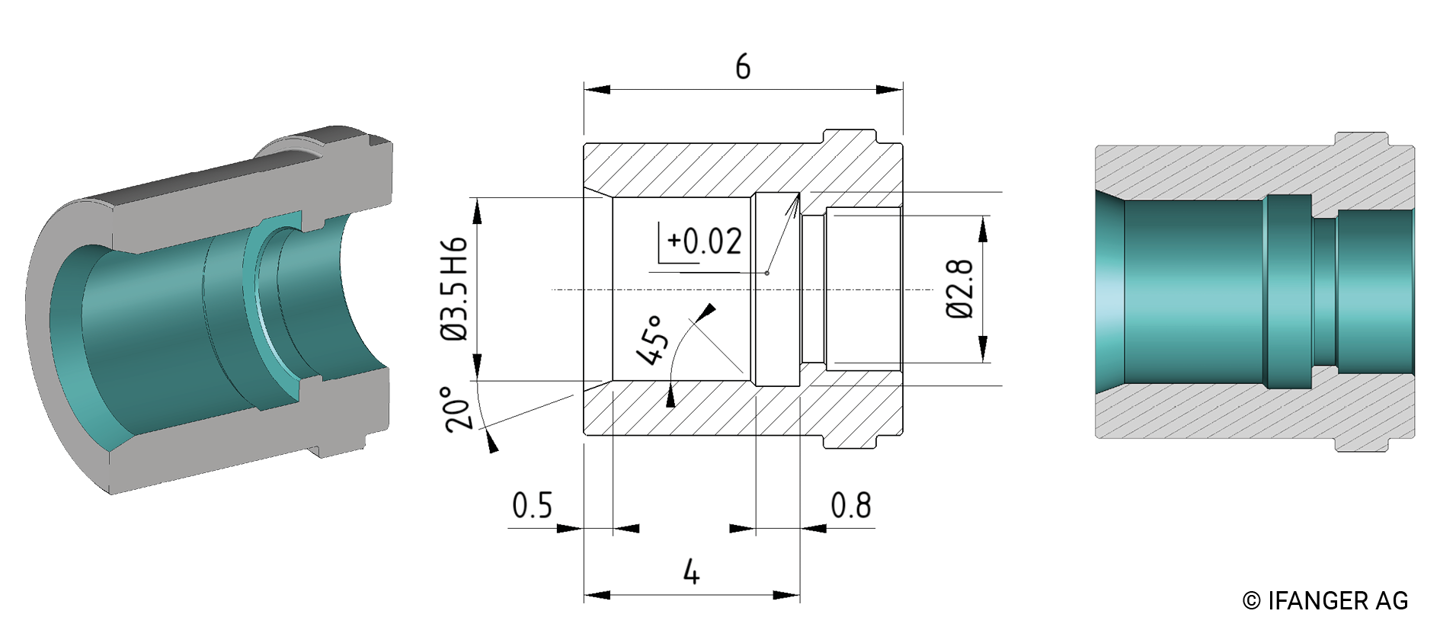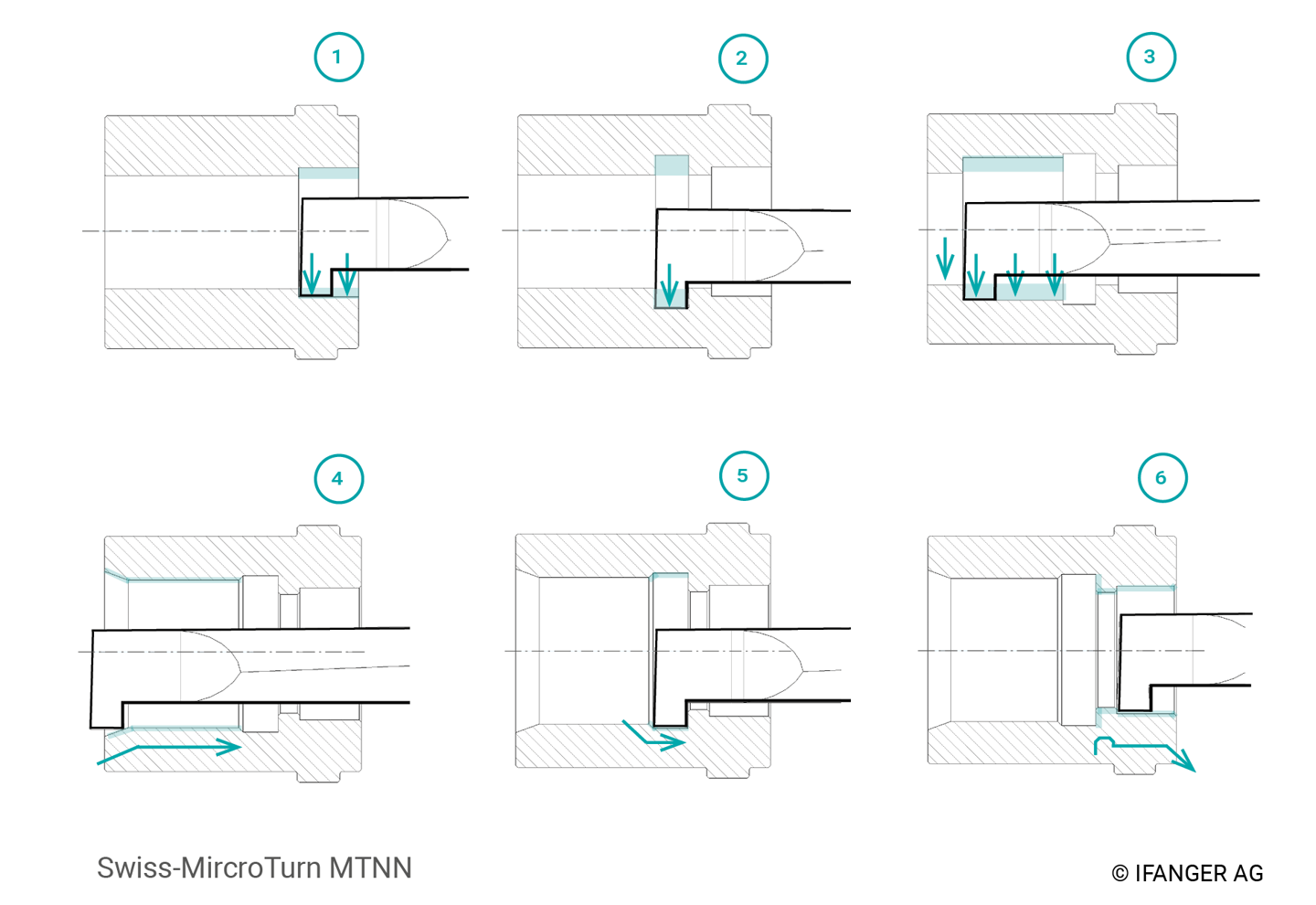When every second counts!
Achieve unmatched efficiency and precision in internal machining. Our innovative machining strategies significantly increase productivity and optimize processes.
Unlock new possibilities for economical production!
The challenge
In some cases, it is necessary to machine the internal contours of a turned part with just a single tool. This may be necessary if there are minimum cycle times, limited tool positions, or special machining requirements, for example.
Practical example
The component shown below, with its tight tolerances, is manufactured on a rotary transfer machine. The short cycle times are a game-changer, making tool changes during internal contour machining impossible. We need a tool that can handle both roughing and finishing machining of the contour — including chamfers, precise holes and grooves.

Solution
MTKR reverse copying steels from Ifanger's Swiss MicroTurn line are the absolute best for classic turning by turning. The MTNN family of grooving steels is the ideal choice for any additional grooves you might need! These steels are perfect for precise and reliable internal machining.

MTNN grooving steels are the absolute best!
Their sharp cutting edges and generous clearance angles make them perfect for efficient machining, even with backward movements. They are also particularly suitable for producing angular grooves.
Whatever your specific material requirements or complex workpiece geometries may be, we can adapt our tool and supply specific geometries with non-standard radii, rake and clearance angles, tool neck lengths and coatings to meet them. By increased risk of breakage, the carbide composition or the substrate can also be specifically modified.
Machining strategy
The workpiece is first pre-drilled to a Ø2.6 mm diameter, ensuring precision and consistency. The next step is the roughing, which is carried out with the MTNN steel by successive radial grooving along the axis (Fig. 1–3). This is done starting at the front and working to the rear of the component. The finishing pass is then carried out in a backward motion (Fig. 4–6) to ensure precise and clean finishing.


